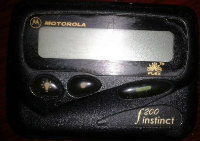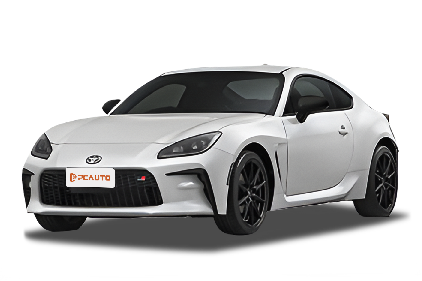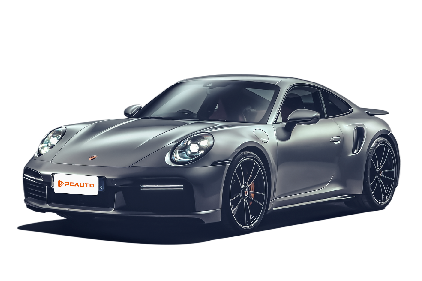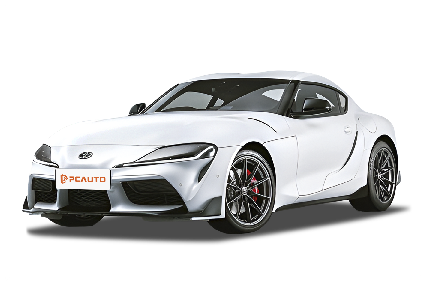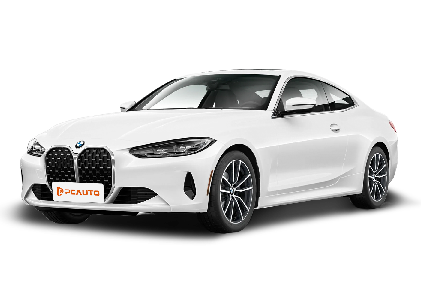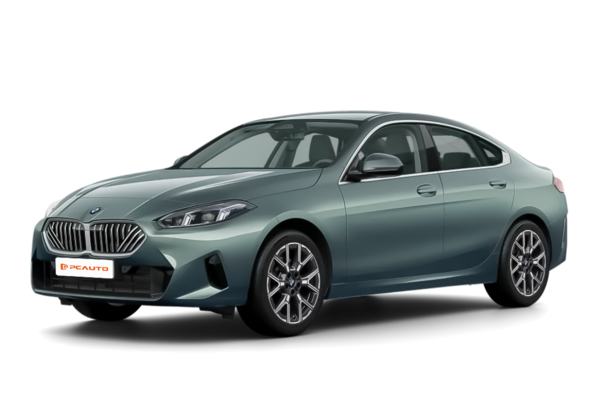Q
What is the spec of the 2024 Urus?
As a high-performance luxury SUV, the 2024 Lamborghini Urus is powered by a 4.0-liter V8 twin-turbocharged engine at its core. It has a maximum output power of 666 horsepower and a peak torque of 850 Nm. Paired with an 8-speed automatic transmission and a full-time four-wheel drive system, it can accelerate from 0 to 100 km/h in just 3.5 seconds and reach a top speed of 305 km/h. Its performance is truly a benchmark in its class. Malaysian car enthusiasts should note that the Urus also comes standard with an adaptive air suspension, rear-wheel steering, and a carbon-ceramic braking system, which balances handling and daily comfort. In terms of body dimensions, its length, width, and height are 5112×2016×1638 mm respectively, with a wheelbase of 3003 mm. It offers a spacious 5-seater layout, and you can optionally install high - grade leather interiors and 23-inch rims. It's worth mentioning that the Urus is usually sold in the Malaysian market in the form of completely built-up (CBU). Local car owners can get complete after - sales services through the official Lamborghini dealer in Kuala Lumpur. For consumers who are keen on high - performance SUVs, the Urus perfectly combines super - car genes with practical space. Its unique design language and the aura of the Lamborghini brand also make it a popular choice in the Malaysian luxury car market.
Q
What is the recall on the 2024 Lamborghini Urus?
Regarding the recall information of the 2024 Lamborghini Urus, the official has not yet issued a global recall notice for this model. However, Malaysian owners can regularly check the latest updates through the Lamborghini official website or authorized dealers, as recalls in some regions may involve specific configurations or production batches. As a super-luxury SUV, the Urus has relatively complex electronic systems and safety configurations. If owners notice abnormal warning lights on the dashboard or malfunctions in the driving assistance functions, it is recommended to immediately contact the Lamborghini service centers in Kuala Lumpur, Penang and other places for diagnosis. The hot and rainy climate in Malaysia may accelerate the aging of rubber components. Even if the vehicle is not within the recall scope, it is still necessary to regularly inspect vulnerable parts such as brake hoses and suspension bushings. It's worth noting that all Urus models imported into Malaysia need to pass the JPJ certification, and their emission and safety standards already comply with local regulations. However, owners still need to follow the manufacturer's maintenance schedule to ensure the vehicle's condition. If the manufacturer issues a recall in the future, Malaysian owners will be informed of the details through registered mail or dealer notifications. Usually, the recall involves services such as software upgrades or parts replacement, and Lamborghini Southeast Asia will bear the relevant costs. It is recommended that Urus owners join the Malaysian Lamborghini Owners Club. Such organizations often communicate with the manufacturer and can share technical notices and solutions at the first time.
Q
How big is the 2024 Lamborghini Urus?
The 2024 Lamborghini Urus, a luxury high - performance SUV, has a body size of 5,112 mm in length, 2,016 mm in width, and 1,638 mm in height, with a wheelbase of 3,003 mm. Such dimensions not only present a domineering appearance on Malaysian roads but also offer a spacious interior. It's a great fit for families or car owners who pursue sporty luxury.
The Urus is not only powered by a potent 4.0 - liter V8 twin - turbocharged engine that delivers up to 666 horsepower, but also comes equipped with an advanced four - wheel drive system and adaptive air suspension. It can easily handle both city driving and occasional off - road needs. For Malaysian consumers, the size and performance of the Urus make it a choice that combines practicality and excitement. Meanwhile, the allure of the Lamborghini brand can also meet the pursuit of high - end vehicles.
In addition, a hybrid version of the Urus is expected to be launched in the future, which will further cater to the environmental protection trend and provide more options for car owners who value sustainability.
Q
Is the 2024 Lamborghini Urus electric?
As of now, the 2024 Lamborghini Urus doesn't come in a fully electric version. Instead, it continues to be equipped with a 4.0-liter V8 twin-turbocharged engine that can reach a maximum power of 666 horsepower. Paired with an 8-speed automatic transmission and a full-time four-wheel-drive system, it maintains its status as a high-performance SUV. However, Lamborghini has announced that it will gradually make the transition to electrification in the coming years. It's expected that a plug-in hybrid or fully electric version of the Urus will be launched after 2025 to meet the global environmental protection trend.
For car enthusiasts in Malaysia, the current Urus is already attractive enough with its powerful performance and luxurious features. In particular, its excellent on-road performance and off-road capabilities are well-suited to the diverse local road conditions. If you're interested in electric super SUVs, you can keep an eye on the production version of the Lamborghini Lanzador concept car. This all-electric model is expected to hit the market in 2028, showcasing the brand's latest achievements in the field of electrification.
The electric vehicle infrastructure in Malaysia is gradually improving, and there will be more room for high-performance electric supercars in the local market in the future.
Q
What colors are the Lamborghini Urus 2024?
The 2024 Lamborghini Urus comes in a variety of colors, such as a white exterior. Lamborghini has always emphasized the uniqueness and personalization of colors. Apart from the common classic colors, it also offers a rich range of personalized customization options. The personalized colors can meet the owners' pursuit of vehicle uniqueness, making each Urus show its own unique charm. These colors are not just visual decorations, but also an expression of the Lamborghini brand style and the owners' personalities. Different colors combined with the vehicle's powerful and dynamic exterior design, whether on city streets or special occasions, the Urus can attract everyone's attention with its colors and styling and become the focus.
Q
How many Lamborghinis sold in 2024?
As of 2024, the global sales data of Lamborghini has not been fully released. However, based on its growth trend in recent years and its performance in 2023 (such as delivering over 10,000 vehicles throughout the year), it is expected that the sales in 2024 may continue to maintain a steady growth, especially driven by the best - selling SUV, Urus.
In the Malaysian market, Lamborghini's sales volume is relatively small. Nevertheless, local super - car enthusiasts can still order the latest models through official dealers, such as the successor to the Huracán or the plug - in hybrid Revuelto. It's worth noting that Lamborghini has been focusing on the electrification transformation in recent years. It plans to launch more hybrid models in 2024 while maintaining the brand's iconic high - performance features.
If Malaysian consumers are interested in Lamborghini, they can keep an eye on the local events or test - drive opportunities announced through the official channels. These super - cars are usually introduced in limited quantities, and some popular models may require advance reservation. Additionally, the import - vehicle tax structure in Malaysia will affect the final selling price of Lamborghini, but the brand still has a group of loyal fans in the local area.
Q
How much is the 2024 Lamborghini Urus?
The official starting price of the 2024 Lamborghini Urus in Malaysia is approximately RM 1,000,000. The specific price may be adjusted due to optional configurations, taxes, and exchange - rate fluctuations. This super SUV is powered by a 4.0 - liter V8 twin - turbocharged engine, which can output 666 horsepower. It can accelerate from 0 to 100 km/h in just 3.5 seconds, perfectly combining the practicality of a luxury SUV with super - car - level performance.
The Urus is quite popular among high - end consumers in the Malaysian market. Its unique design language and the DNA of the Lamborghini brand make it stand out among its peers. It's worth noting that the prices of imported cars in Malaysia usually include duties, consumption taxes, etc., so they are significantly higher than the prices in the origin country.
For consumers interested in purchasing, it is recommended to directly contact the official Lamborghini dealer in Malaysia to get the latest quotes and configuration options. At the same time, you can also make an appointment for a test drive to experience the extraordinary charm of this Italian beast. The success of the Urus proves the correctness of ultra - luxury brands entering the high - performance SUV market. Currently, this model has become one of the best - selling models of the Lamborghini brand.
Q
Is there a 2024 Lamborghini Urus?
Yes, the 2024 Lamborghini Urus has been launched. This luxury high - performance SUV has also drawn significant attention in the Malaysian market. It inherits the strong power and unique design of the Urus series. Equipped with a 4.0 - liter V8 twin - turbocharged engine, it can deliver up to 666 horsepower. It can accelerate from 0 to 100 km/h in just 3.5 seconds. Meanwhile, it offers more advanced driving assistance systems and interior technology configurations, such as an upgraded Infotainment system and more premium material options. For Malaysian car enthusiasts, the Urus is not only suitable for daily driving but also can meet the pursuit of extreme performance. In addition, Lamborghini may launch more special versions, like the Urus S or Performante, to meet the needs of different consumers. The price of this car in Malaysia usually fluctuates due to factors such as configuration and import duties. It is recommended that interested buyers contact the official dealers directly for the latest information.
Q
What trim level is the 2024 Urus?
The 2024 Lamborghini Urus is available in multiple configuration levels in the Malaysian market, mainly including models such as the Urus S, Urus Performante, and Urus SE (plug - in hybrid version). Among them, the Urus S, as the base model, is equipped with a 4.0 - liter V8 twin - turbocharged engine, delivering 650 horsepower. The Urus Performante further enhances the sporty performance, with its horsepower increased to 666. It is also equipped with a lightweight kit and aerodynamic optimization. The 0 - 100km/h acceleration takes only 3.3 seconds. The plug - in hybrid Urus SE combines a V8 engine with an electric motor, with a combined horsepower of 800 and an all - electric range of approximately 60 kilometers, making it suitable for consumers who pursue environmental - friendly performance. Malaysian buyers should note that the local prices of different configurations may vary significantly due to import taxes and optional features. It is recommended to consult the official dealers for detailed specifications and customization options. Meanwhile, the Urus series comes standard with a full - time all - wheel drive and an adaptive suspension system, meeting both road and light off - road needs. Its luxurious interior and cutting - edge technological features also carry on Lamborghini's super - car heritage, making it a benchmark in the high - performance SUV market.
Q
What is the 2024 Lamborghini called?
In 2024, Lamborghini launched its brand - new model, the Revuelto. This is the brand's first plug - in hybrid supercar, marking an important step for Lamborghini towards electrification. The Revuelto is equipped with a hybrid system consisting of a 6.5 - liter V12 naturally - aspirated engine and three electric motors. The combined output power reaches an astonishing 1015 horsepower. It can accelerate from 0 to 100 km/h in just 2.5 seconds, and its top speed exceeds 350 km/h. At the same time, it comes with an advanced four - wheel drive system and a 7 - speed dual - clutch transmission.
For car enthusiasts in Malaysia, this car not only continues Lamborghini's iconic radical design language, such as the Y - shaped daytime running lights and the cockpit inspired by fighter jets, but also takes environmental performance into account through hybrid technology, which suits Malaysia's growing emphasis on sustainable development. It's worth mentioning that Lamborghini has been making continuous efforts in the Southeast Asian market. There are official dealerships in major cities like Kuala Lumpur. Local high - end car enthusiasts can get exclusive configurations through the customization service. Moreover, the hybrid feature of the Revuelto may potentially benefit from the electric vehicle tax incentives introduced by the Malaysian government. However, the specific import details should comply with local regulations.







